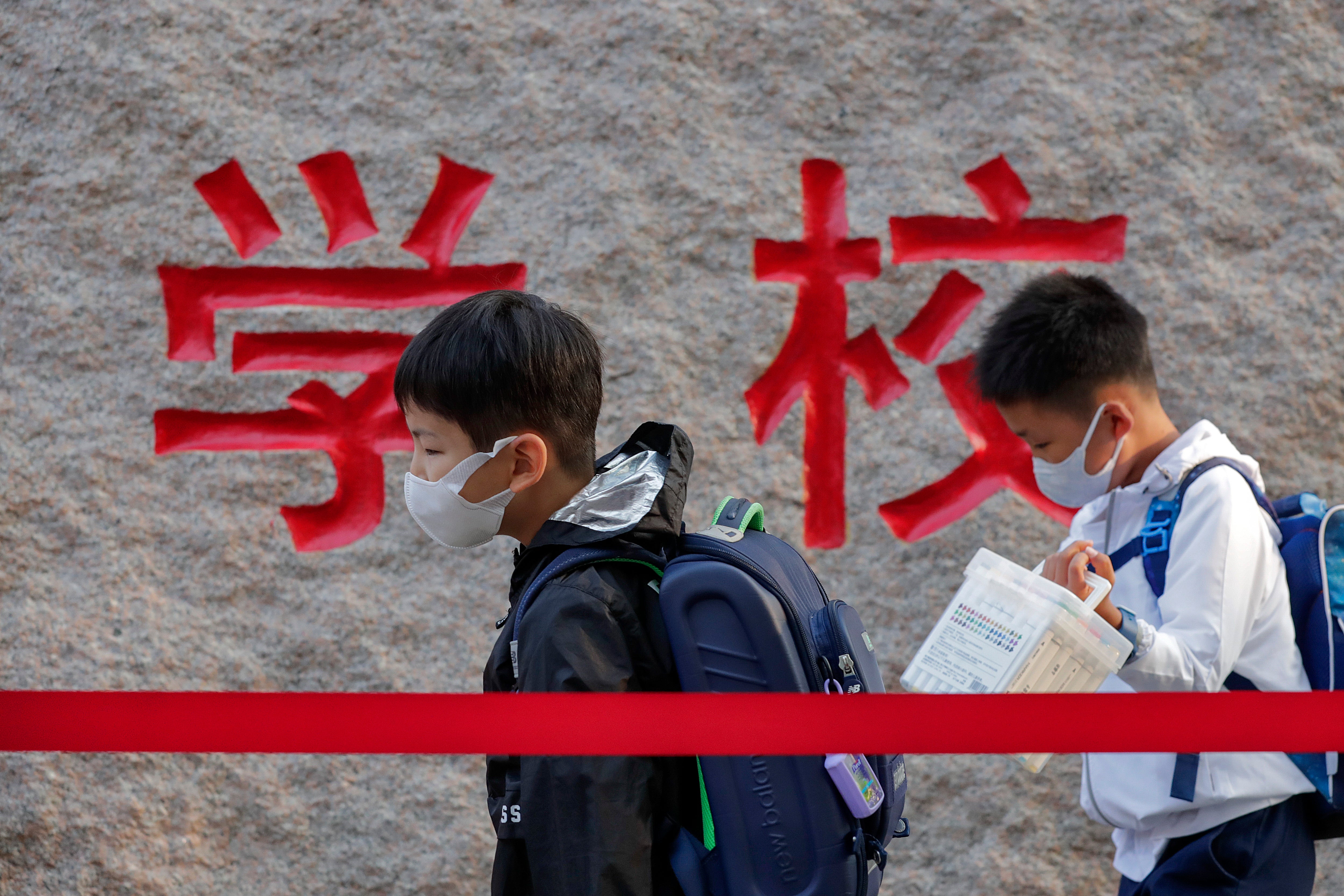Pandemic tie to vision issues seen in Chinese kids' study
Research suggests vision problems increased among Chinese schoolchildren during pandemic restrictions and online learning

Your support helps us to tell the story
From reproductive rights to climate change to Big Tech, The Independent is on the ground when the story is developing. Whether it's investigating the financials of Elon Musk's pro-Trump PAC or producing our latest documentary, 'The A Word', which shines a light on the American women fighting for reproductive rights, we know how important it is to parse out the facts from the messaging.
At such a critical moment in US history, we need reporters on the ground. Your donation allows us to keep sending journalists to speak to both sides of the story.
The Independent is trusted by Americans across the entire political spectrum. And unlike many other quality news outlets, we choose not to lock Americans out of our reporting and analysis with paywalls. We believe quality journalism should be available to everyone, paid for by those who can afford it.
Your support makes all the difference.Research suggests vision problems increased among Chinese schoolchildren during pandemic restrictions and online learning, and eye specialists think the same may have happened in U.S. kids.
A report published Thursday in JAMA Ophthalmology is the latest to show the trend and the results echo those of two earlier Chinese studies.
Researchers from Sun Yat-Sen University in Guangzhou compared data from eye exams given a year apart to about 2,000 children, starting in second grade. Half the children were tested twice before the pandemic, in late 2018 and a year later. The others were tested in late 2019 and again late last year, several months after schools shut down and Chinese authorities imposed quarantines and lockdowns.
Initial tests of both groups done before the pandemic showed nearsightedness about the same — about 7% of second graders. It increased in both groups, but went up more in those retested late last year. By third grade, about 20% of them were nearsighted compared with 13% of those tested again before the pandemic.
The study lacked information on how much time kids in both groups spent online or doing other work that might strain the eyes, a limitation the researchers acknowledged.
But a journal editorial said the results and those from earlier studies “should prompt parents, schools and governmental agencies to recognize the potential value of providing children with outdoor activity time and monitoring how much time is spent on near work.’’
Nearsightedness, formally called myopia, affects about 30% of the world’s population and evidence shows it has been steadily increasing over the past 20 years. It is an eye-focusing problem that makes distant objects look blurry and can often be fixed with eyeglasses. The condition can be inherited but habits can affect who develops it. Evidence suggests those who spend lots of time working at computers, reading or doing other close visual work are at risk.
Noreen Shaikh, a myopia specialist at Lurie Children’s Hospital in Chicago called the Chinese research solid and said Lurie researchers are investigating any changes in nearsightedness among U.S. children during the pandemic.
“Anecdotally, there definitely seems to be an increase — particularly in younger children,” Shaikh said.
Her colleague, Lurie optometrist Magdalena Stec, noted that there are ways to help reduce eye strain, including lots of outdoor time and practicing the “20/20/20’’ vision rule — after 20 minutes of focusing close-up, looking away for 20 seconds at something 20 feet away.
___
Follow AP Medical Writer Lindsey Tanner at @LindseyTanner.
___
The Associated Press Health and Science Department receives support from the Howard Hughes Medical Institute’s Department of Science Education. The AP is solely responsible for all content.